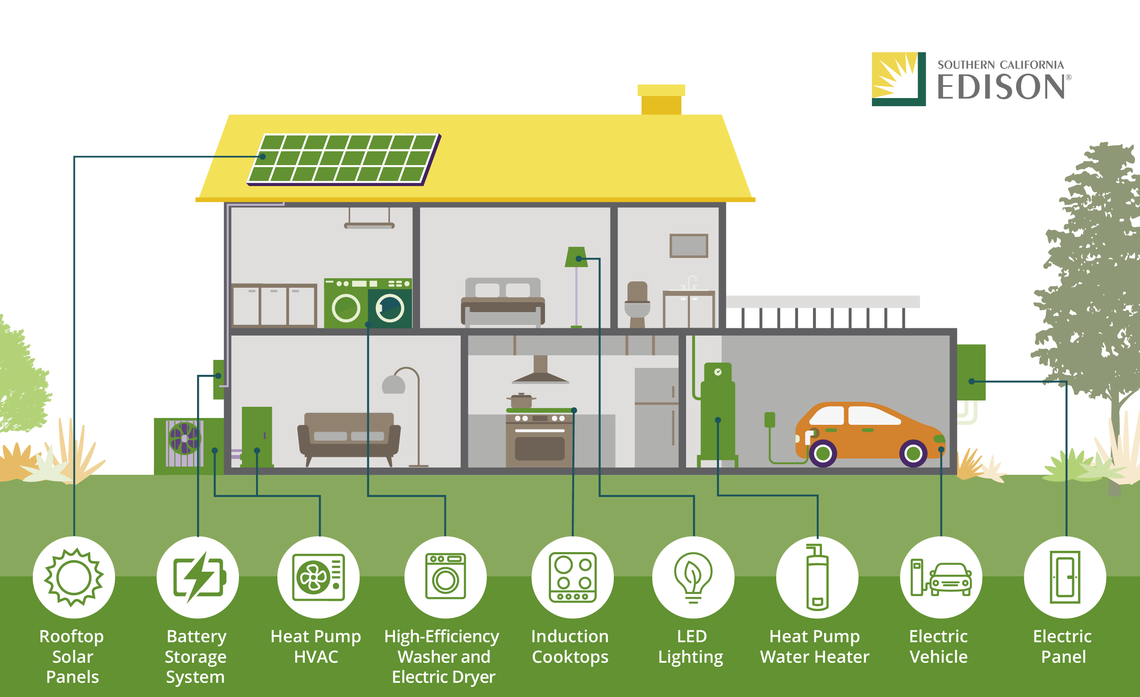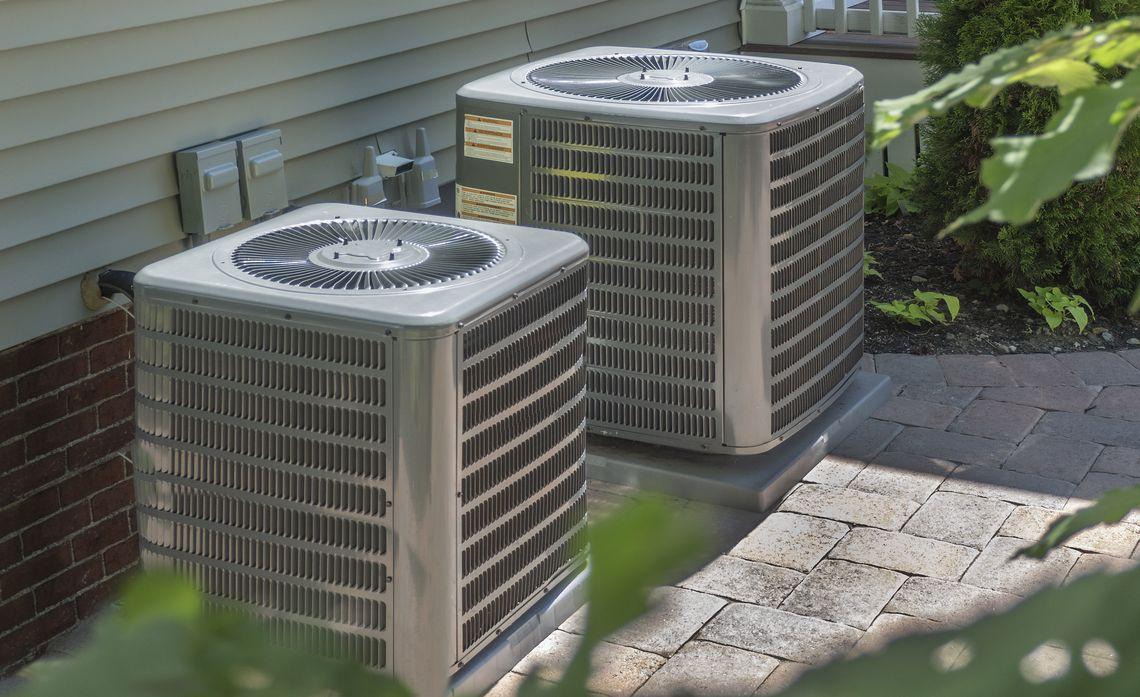All-Electric Buildings: Clean Energy’s Next Frontier
SCE's plan to replace gas-powered appliances can help save the planet – and lower your bill.
Residential and commercial buildings generate significant annual greenhouse gas emissions globally, and their carbon footprint is growing. In California, they’re responsible for roughly 14% of emissions; that number increases to 25% when considering electricity use in homes and businesses.
Building electrification, or the shift to electricity-powered appliances, will not only advance California’s climate goals — it also can lower your bill by reducing the need for natural gas.
“SCE’s Pathway 2045 analysis shows the average household customer will save about one-third on their total cost of energy by 2045 compared to today, in real terms, even as their electricity use increases,” said Pedro J. Pizarro, Edison International president and CEO. He noted that while electricity costs will likely continue to rise, spending on natural gas and gasoline for cars will decrease dramatically because consumers will be less reliant on fossil fuels.
While California has made tremendous progress decarbonizing the energy supply and has jump-started efforts to electrify vehicles, improvements in the building sector have lagged.
“We’re starting to see the electrification of transport and decarbonization of the power grid,” said Jules Kortenhorst, a partner at Vision Ridge, a sustainable real assets investor. “Buildings are the next important piece of the puzzle,” he said in a recent Leading the Charge interview with Pizarro.
Berkeley, California’s 2019 ban on natural gas hookups in new construction kicked off the nascent all-electric movement now emerging in parts of the country. California last year became the first state to prohibit the sale of new gas furnaces and water heaters starting in 2030.
To ensure California meets its carbon neutrality goals, Southern California Edison estimates that 30% of residential and commercial space and water heaters need to be electric by 2030 and 70% by 2045.
SCE is working to support the state’s push to rapidly cut fossil fuel use in buildings by helping customers upgrade appliances in homes and businesses to highly efficient electrical equipment powered by a grid that’s getting cleaner every year.
Natural gas-powered space and water heating systems are the highest energy users in residential and commercial buildings, contributing more than two-thirds of total GHG emissions from homes and businesses.
Unlike furnaces that generate heat through combustion, electric heat pumps transfer it from one place to another, providing heating and cooling (depending on seasonal temperatures) with a single appliance. They’re up to four times more efficient than gas systems, saving on energy use and cost.
Additional benefits include improved safety, health outcomes and air quality, according to RMI, a nonprofit that aims to improve America’s energy practices.
Benefits of an All-Electric Home
- Lower energy bills: Electric heat pump space and water heating is more efficient, lowering costs; plus, there’s no gas bill
- Healthier and safer living space: Eliminating gas appliances reduces indoor air pollutants such as nitrogen dioxide and carbon monoxide, which have been linked to major health issues like asthma
- More sustainable: GHG emissions are drastically reduced when systems and appliances are powered by carbon-free electricity
Path to an All-Electric Home
- Replace carbon-emitting gas furnaces, water heaters and dryers with clean, portable, electric heat pumps
- Swap out gas ranges for modern, high-tech induction stoves that use magnets to heat food — not your grandmother’s electric coil cooktops
- Save money over time by installing solar panels and battery storage, eliminating leaky windows and doors and insulating walls, floors and attics
To accelerate change, SCE filed a plan with the California Public Utilities Commission last year to provide $667.2 million to install roughly 250,000 heat pumps across its service area over four years.
If approved, the proposal also would offer customers home electrification readiness assessments and incentives for installing space and water heat pumps and upgrading electric panels and circuits.
SCE’s plan prioritizes low-income communities, including those “disproportionately affected by indoor and outdoor air pollution, extreme weather and climate change.”
California’s new building code encouraging all-electric designs went into effect on Jan. 1. Gov. Gavin Newsom has called for 3 million “climate-ready and climate-friendly” homes by 2030 and 7 million by 2035; he wants 6 million heat pumps installed by 2030, with underserved communities receiving half the funding to achieve these goals.
It’s part of a national trend as the Biden administration expands tax credits to help home and business owners shift from gas to electric. California also offers statewide rebates and incentives encouraging residents to “flip the switch” on all-electric buildings to save money, live healthier and lower emissions.
For customer information about the benefits of an electric home, visit sce.com/home-energy-guide. Visit The Switch is On to find a skilled contractor or explore rebates and incentives. For tips about purchasing a heat pump, Consumer Reports offers a buyer's guide.





